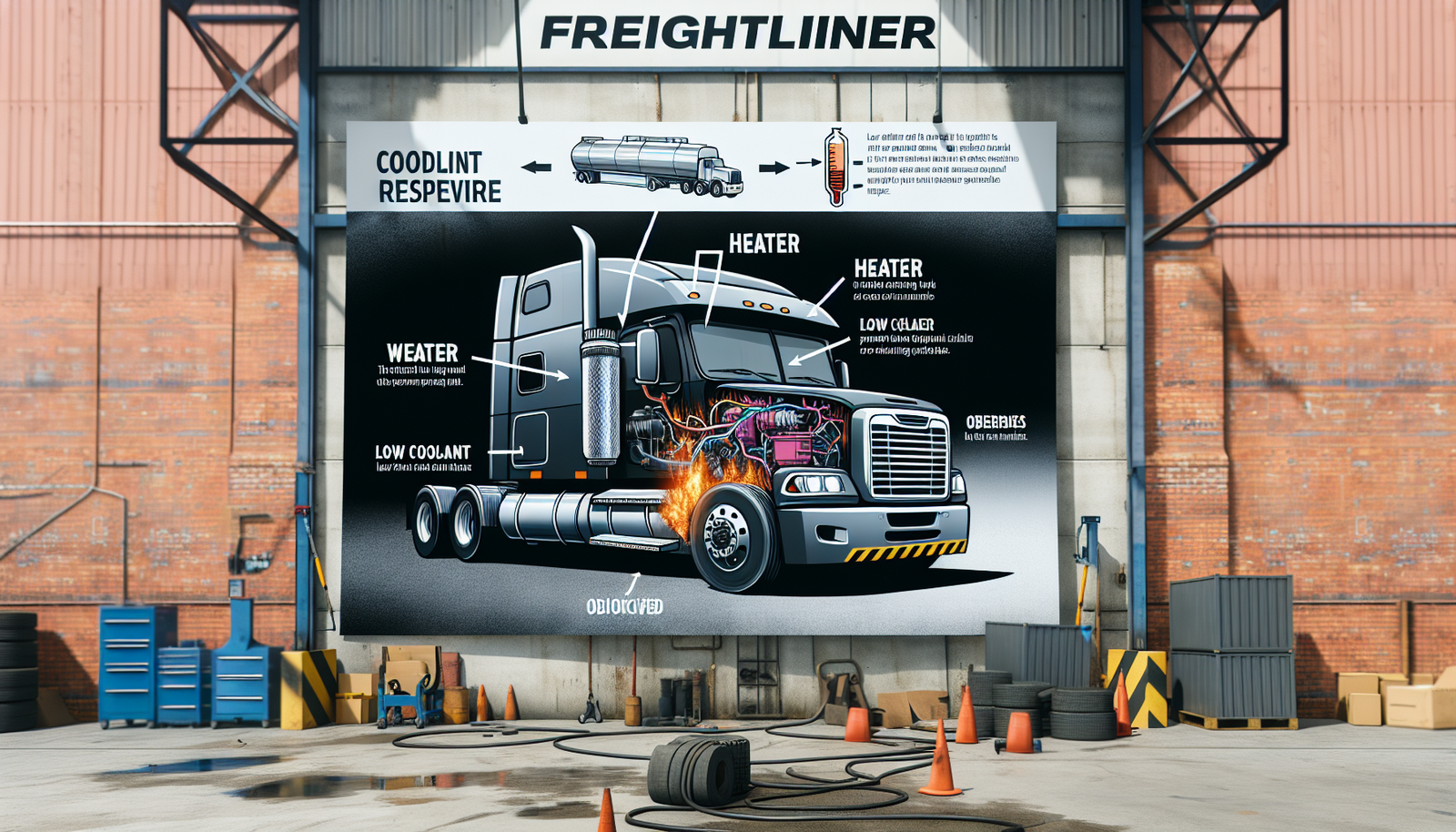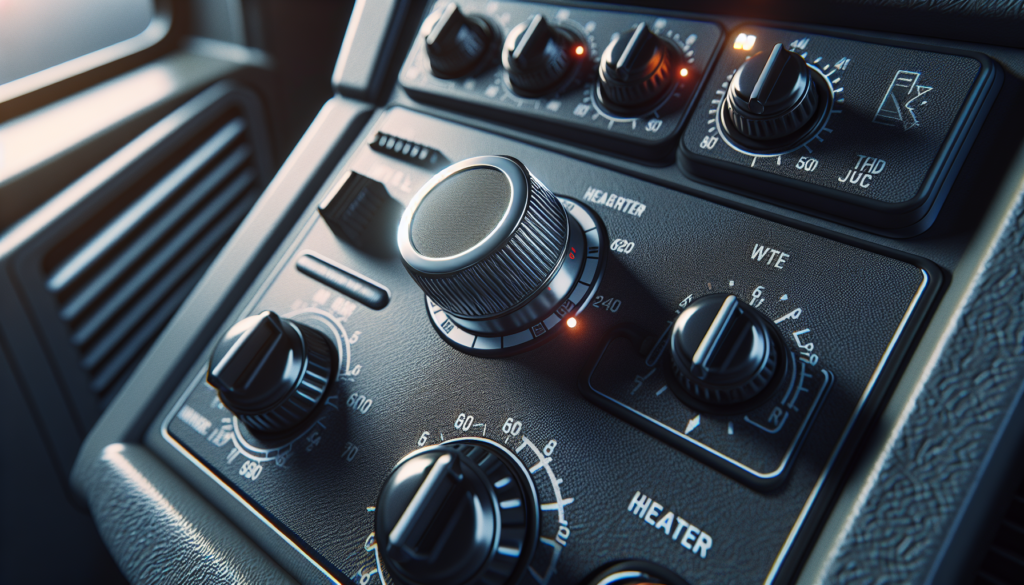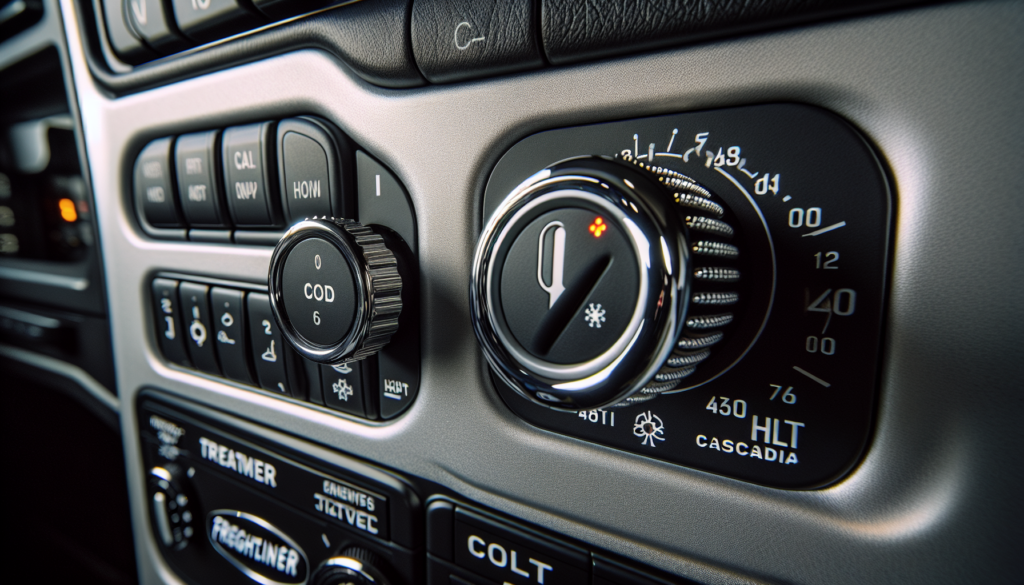
You might have found yourself rather puzzled lately, as you’ve been venturing down the road in your Freightliner Cascadia only to experience cold blasts from your heater instead of the warm waves you were expecting. Having a heater malfunction during a frosty season can throw a wrench in your driving routine and it’s certainly something you want to have sorted out sooner rather than later. So let’s travel together down the diagnostics road and figure out why your truck might be exuding chilly air when it’s supposed to be the comforting warmth you need.
Understanding the Heating System in Your Freightliner Cascadia
If you’re a Freightliner Cascadia owner, you probably spend a good deal of time in your truck. To make your journey comfortable, especially during colder months or chillier nights, it’s essential to have a good understanding of the heating system in your truck.
The Role of the Heater Core
The heater core is integral to your truck’s heating system. It’s much like a smaller version of your radiator, and it plays a vital role in regulating temperatures inside your cabin. It works by circulating the coolant coming from your truck’s engine through its coils, creating heat that is then blown into the cabin by the blower motor.
How the Blower Motor Functions
The blower motor is the component responsible for blowing warm air into the cabin of your truck. It gets power from the battery and spins a fan which circulates the air. Its speed can usually be controlled by the settings on your heating control panel. If there’s a problem with the blower motor, you might notice that the heater in your truck isn’t working as effectively as it should be.
Thermostat Regulation in Heating
The thermostat in your truck acts as a gatekeeper for the flow of coolant in your engine. When your engine is cold, the thermostat remains closed. As your engine warms up, the thermostat opens, allowing coolant to circulate and maintain the correct temperature in your engine. It plays an important role in both heating and cooling your engine effectively.
Common Causes of Heater Dysfunction
Understanding the common causes of heater dysfunction can help you diagnose and fix problems with your Freightliner Cascadia’s heating system more effectively.
Antifreeze Level and Its Importance
Antifreeze is crucial for your heating system. Its main job is to absorb heat from the engine and then dissipate it via the radiator and heater core. If your antifreeze level is low, it might not be able to carry enough heat from your engine to your heater core, leading to decreased heat in the cabin.
Air Trapped in the Cooling System
If there is air trapped in your cooling system, it can lead to a variety of issues including poor heating. Air in the system can prevent the coolant from circulating effectively, which in turn could lead to your heater core not receiving enough hot coolant.
Heater Core Clogs and Leaks
Clogs and leaks in the heater core can bring about insufficient heating in your truck. This is because both issues can prevent the effective flow of coolant through the heater core, leading to less heat being produced.

Thermostat Issues
The thermostat plays an important role in your heating system, so it’s important to detect and fix any potential issues with it.
Symptoms of a Failed Thermostat
If your thermostat fails, your truck might exhibit several symptoms, including overheating, under-heating, or temperature fluctuations. This is because the thermostat is no longer able to regulate the temperature of the coolant properly.
Testing Thermostat Operation
To test the operation of your thermostat, you can monitor your truck’s temperature gauge. If your thermostat is functioning properly, your oil temperature should remain stable and within the normal range. If the temperature fluctuates erratically, your thermostat might be faulty.
The Impact on Heater Performance
A malfunctioning thermostat can negatively impact heater performance. If the thermostat is stuck open, it could result in your truck’s engine being too cool, and therefore the heater might not produce enough warm air. Conversely, a thermostat stuck in the closed position could lead to overheating.
The Heater Core: Blockages and Solutions
Blockages in the heater core can cause heating problems in your truck, so it’s crucial to identify and rectify these issues.
Identifying a Blocked Heater Core
If your heater core is blocked, you might notice a significant drop in the heat output from your heating system. Additionally, the coolant temperature may quickly rise, indicating that the coolant isn’t flowing as it should be.
Flushing the Heater Core
One way to rectify a blocked heater core is to flush the system. This involves forcing an antifreeze solution through the heater core to dissolve and clear away any debris. But remember: flushing should be done carefully, as improper flushing can cause further damage.
The Need for Core Replacement
In some cases, flushing might not be enough. If your heater core is seriously blocked or damaged, it might need replacing. If your heating issues persist after other repairs, or if you notice coolant leaking into the cab, it might be time to replace the heater core.

Electrical Problems Affecting the Heater
A robust heating system is also dependent on its electrical components. Any issues with these components can lead to heater failure.
Fuse and Relay Failures
Heater dysfunction might be caused by a blown fuse or a faulty relay. If your heater suddenly stops working, it’s worth checking these components first. If you find a blown fuse, replacing it might solve the problem; but remember, a blown fuse is often a symptom of another issue, such as an electrical short.
Blower Motor Electrical Issues
The blower motor relies on electrical power to function. If there’s an issue with the blower motor’s electrical connections, it may not be able to effectively blow warm air into your truck cab.
Troubleshooting Electrical Connections
If your heater isn’t working and you’ve ruled out other issues, it’s time to inspect the electrical connections. Look for any loose or corroded connections, as these can obstruct the flow of electricity.
Blower Motor Issues
The blower motor is a vital part of your heating system. Dysfunction in the blower motor can lead to a lack of warm air inside your truck cab.
Signs of Blower Motor Failure
Signs of blower motor failure can include weak airflow from the vents, no air coming out at all, or the blower motor not working on all settings. If you notice these signs, the blower motor could be the culprit.
Diagnosing Blower Motor Problems
To diagnose blower motor problems, first listen for any unusual noises when you turn on the heater. Ticking or squealing noises could indicate a problem. Also, compare the airflow in all the heater settings. If there’s only airflow in certain settings, the blower motor could be at fault.
Replacing the Blower Motor
If you’ve found a problem with your blower motor and it doesn’t seem to be fixable, you’ll need to replace it. Replacing a blower motor involves removing the old motor and installing a new one, which should restore the functionality of your heating system.

HVAC Control Unit Faults
Problems with the HVAC control unit can affect the whole heating and cooling system in your truck.
Symptoms of HVAC Control Malfunction
Symptoms of a malfunctioning HVAC control unit can include erratic heating and cooling, inability to adjust temperature settings, or total failure of the system.
Diagnostic Procedures
To diagnose HVAC control unit faults, you may need to use a diagnostic tool to read the fault codes from your truck’s onboard computer. This can help you pinpoint the precise issue with your HVAC control unit.
Control Unit Repair or Replacement
If you confirm that the HVAC control unit is faulty, you may be able to repair it, or in more severe cases, it might require replacement. Remember, this is a key component of your cabin comfort system – do not overlook issues with it.
Problems with Air Ducts and Vents
The air ducts and vents are another vital part of your heating system. Any issues with these components can certainly affect your truck’s heating functionality.
Obstructed Vents and Reduced Airflow
If your vents are obstructed, they can’t deliver warm air to the cabin effectively. You may notice reduced airflow, or certain parts of your truck cab may be colder than others.
Inspecting and Cleaning Air Ducts
If you suspect a blockage, inspect and clean your air ducts. This involves visually checking the ducts for blockages, and using a specialised cleaning tool to remove any dirt or debris from the ducts.
Fixing Broken Blend Doors
Blend doors control the flow of air through your vents. If your blend doors are broken or stuck, they can obstruct the flow of warm air. If you notice inconsistent temperatures across your cab, the blend doors might be the cause.

Low Coolant Levels and Leaks
Low coolant levels and leaks can be a common issue in older or heavily used trucks, and can dramatically impact heater function.
Checking Coolant Levels Regularly
As part of regular maintenance, always check your coolant levels. Low coolant can cause both overheating and poor heating efficiency. Your vehicle manual will guide you on where to find the coolant reservoir and what the correct level should be.
Detecting and Repairing Coolant Leaks
Be vigilant for signs of coolant leaks, indicated by puddles of coolant under your truck or a sweet, syrupy smell. If you detect a leak, have it repaired immediately to prevent further damage.
Preventative Maintenance for Coolant System
Preventative maintenance is important with any vehicle system, and your coolant system is no exception. Regularly check hoses for cracks and disconnects, and ensure your radiator and heater core aren’t blocked or damaged.
Troubleshooting Tips for Drivers
Knowing how to troubleshoot common heating issues can be the difference between a comfortable and an uncomfortable journey in your Freightliner Cascadia.
Quick Checks Before Professional Help
Before calling a professional, there are a few things you can check. Confirm that your coolant level is okay, and check if there’s heat coming from the heater hoses. Inspect the fuses and relays, and listen for any unexpected sounds coming from the blower motor.
Temporary Solutions in Emergencies
In an emergency, there are a few temporary solutions you can implement. For example, bypassing the heater core can solve some problems in the short term, although you should get a permanent fix done as soon as possible.
Understanding the Heating System’s Mechanics
Gaining an understanding of the heating system’s mechanics can be invaluable. The more you know about how your Freightliner Cascadia’s heating system works, the better equipped you’ll be to diagnose and fix problems, helping to keep your drives comfortable and enjoyable.
